Miele WTH120 washer-dryer Review
Miele WTH120 washer-dryer
Miele's WTH120 is a small-drum washer-dryer that packs in big wash and dry performance and superb features.
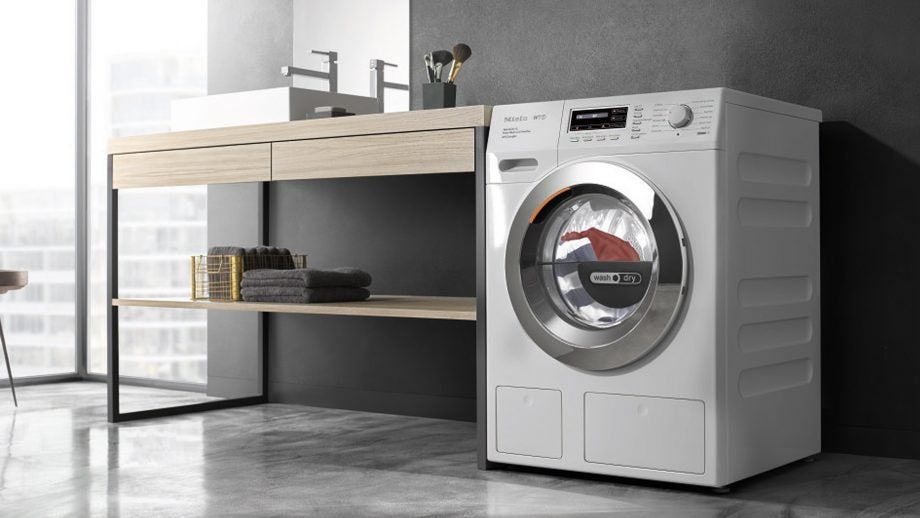
Verdict
Pros
- Excellent washing and drying results
- Wash to dry convenience
- Huge array of programmes and options
- Staggeringly quiet
- Good economy for a washer dryer
Cons
- Small drum, limited capacity
- Complex operation
- Odd default settings
Key Specifications
- Review Price: £1999.00
- 7kg wash, 4kg drying
- A energy efficiency
- 1600rpm spin speed
- TwinDos auto dosing
- CapDosing
- Miele@Home connectivity
What is the Miele WTH120?
Sitting in the middle of Miele’s high-spec WT1 washer-dryer series, the WTH120 promises top-notch washing and drying performance and more features than you can wave your dirty socks at. TwinDos, CapDosing, Wi-Fi connectivity and more than 30 programmes offer incredible scope.
And incredible complexity, when it comes to learning how to use it. The WTH120 is rather limited in load capacity, so is best for smaller homes – but for superb results, incredible flexibility and super-hushed performance, it’s a true high-end washing, drying winner.
Miele WTH120 – What’s it like to use?
Part of Miele’s latest flagship WT1 trio of premium washer-dryers, the WTH120 is the middle model sporting a 7kg wash and 4kg drying capacity for the not inconsiderable asking price of two grand. Given the growing capacity of even basic washer-dryers, that 7kg wash load in particular is looking a little compact and bijou by comparison.
Yet this is a Miele appliance. The sheer build quality and attention to detail is superb; it feels solid and built to last a lifetime. Just take a look at the catch on the filter flap – a metal clip with a roller… none of your plastic clips here.
Related: Best washing machines
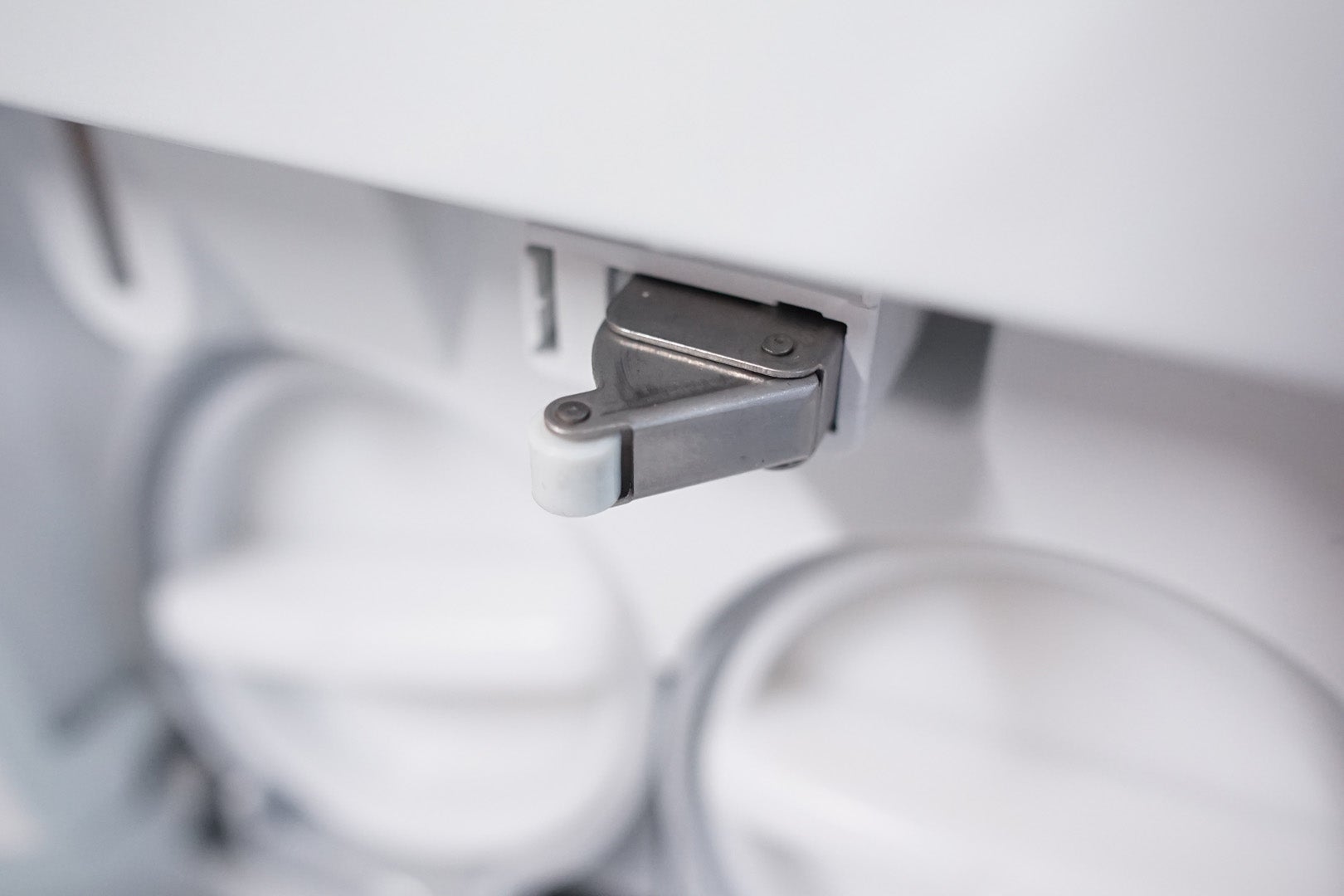
It also has an impressive feature list that requires a whopping 120-page English-only manual. You can see this machine has more tricks up its drum than capacity alone.
Highlights include Miele’s integrated TwinDos detergent dispensing system and CapDosing option for special treatments. TwinDos involves two large-capacity containers for Miele’s UltraPhase detergents and affords precise dosing of both depending on programme, load size and soiling level.
Miele claims TwinDos reduces detergent usage by up to 30% over standard systems and provides better performance. You can also use you own favourite liquid detergents; you’re not tied into the UltraPhase products.
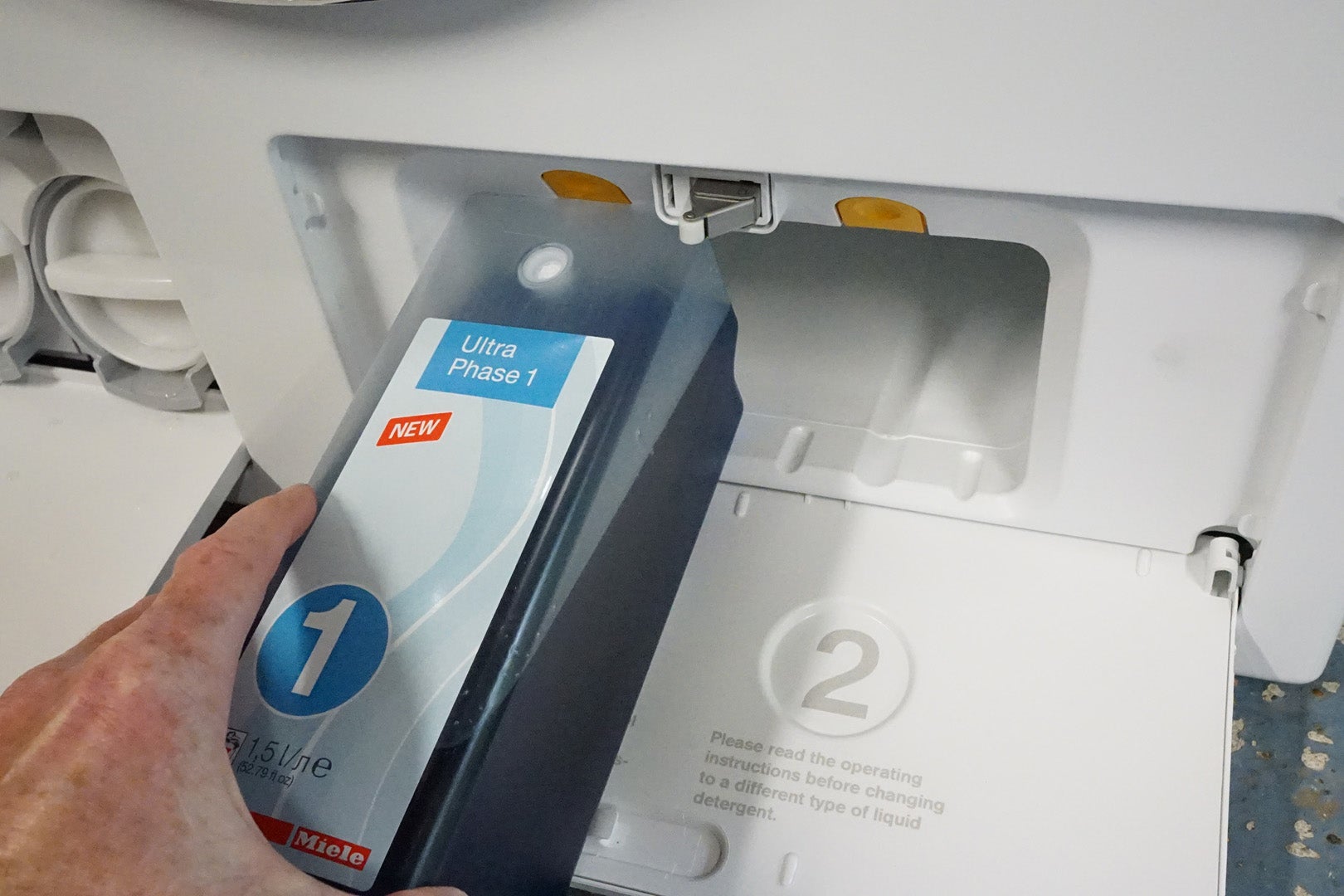
We love automated dosing systems since they’re clean, easy and convenient – but, annoyingly, the WTH120 doesn’t default to TwinDos dosing as standard. It assumes you’re going to use the soap drawer and you must press the TwinDos button to activate the feature with every load. There’s no warning that there’s no detergent in the main drawer if you don’t… resulting in our first two tests running without detergent at all. We’re sure you’ll get used manually selecting TwinDos over time, but it seems an odd default setting to us.
Miele CapDosing is rather more intuitive. It involves placing any one of Miele’s broad range of specialist detergents and fabric conditioner capsules in the soap drawer. You do still have to manually tell the machine to use the CapDosing system each time, though. There are currently 10 caps available from fabric conditioners to material-specific detergents and even a waterproof garment reproofing cap.

Each cap has several loads worth of liquid in it, but the machine pierces the silver foil top of the cap in use. Therefore, caution needs to be exercised when removing and storing partially used caps since there’s no way to reseal them and prone to spillage if they get knocked over.
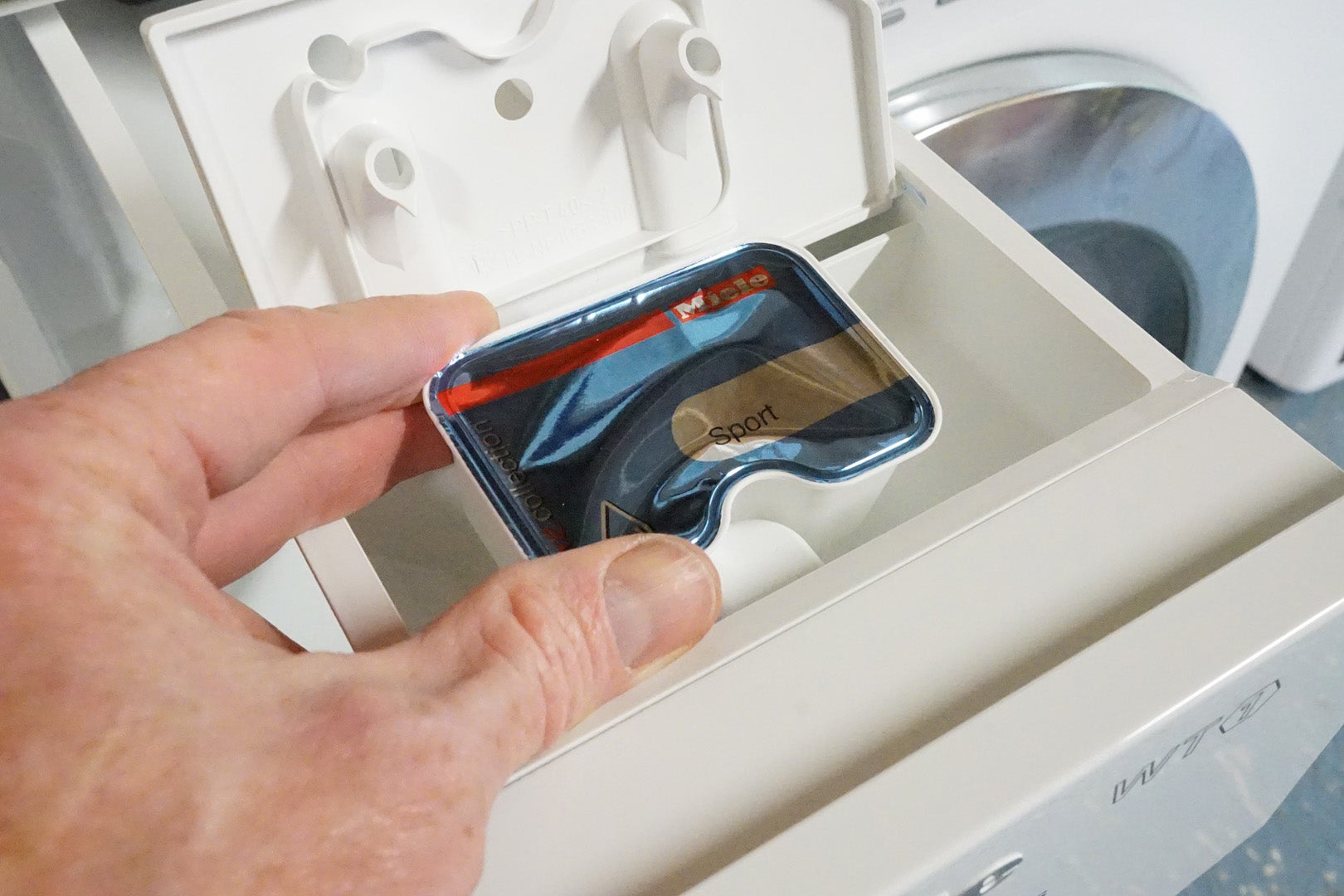
The drum is Miele’s top-spec honeycomb model, which has done very well in our wash and spin efficiency tests in other top-spec Miele machines. But it isn’t big. The porthole door and the drum itself look really old-school small compared to many cutting-edge machines on the market. Washer-dryer drums are always going to be smaller because there’s a whole lot more gubbins to squeeze in, but this Miele looks cramped even compared to other washer-dryers on the market.
Sure enough, our 80% of max capacity main load (5.6kg, in this case) of typical cotton clothes just wouldn’t fit in the drum. While few machines do genuinely take their claimed weight-load in the real world, we were down to under 5kg to leave any movement room in the drum at all.
Strangely, Miele also offers an almost identical WT1 model, the WTZH130, which has a larger 8kg/5kg capacity and costs just 5% more at £2100. Hmmm. We know which we ‘d go for even before we start the tests.
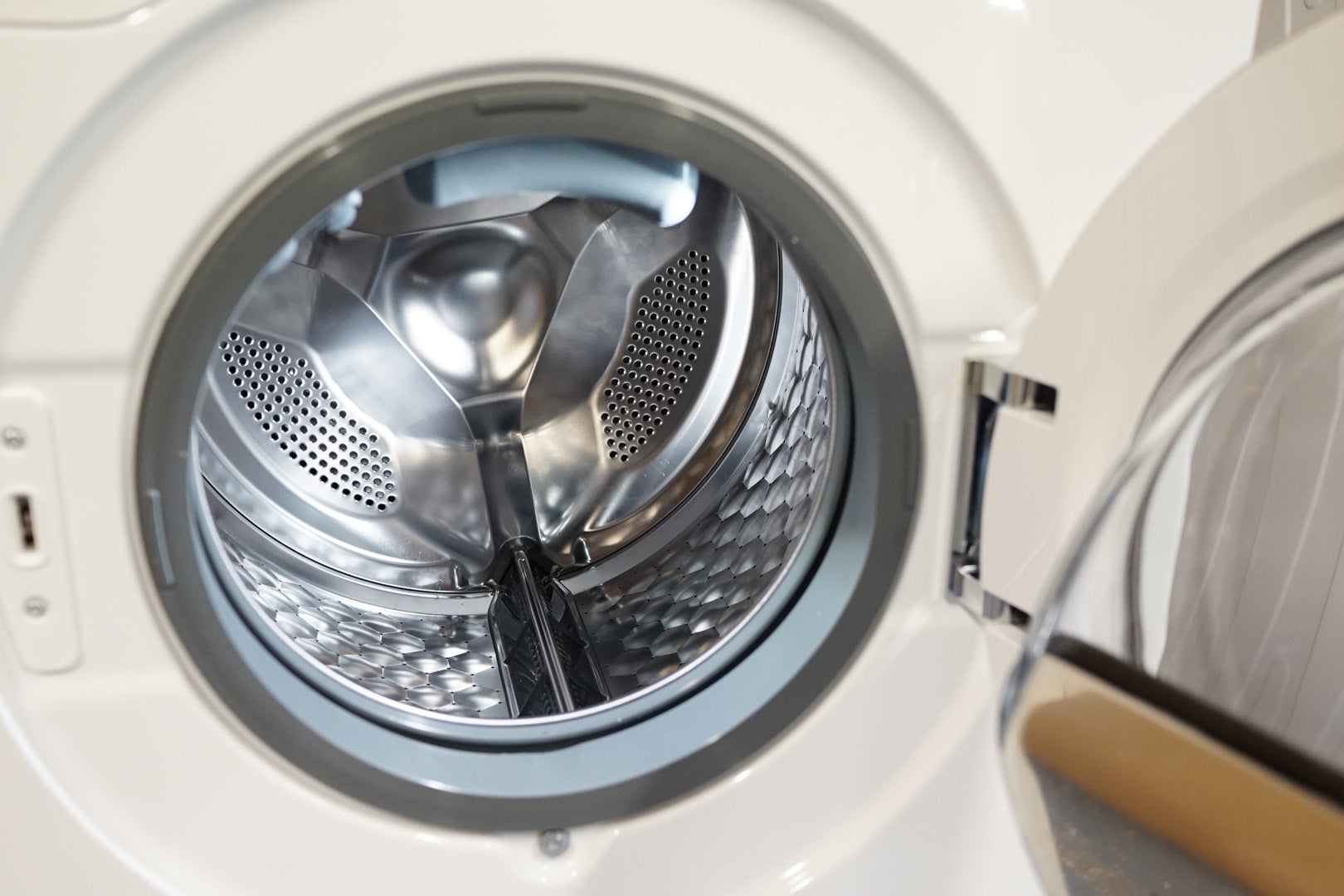
Given all the features on offer and a scrolling menu-based display, getting to grips with operating the WTH120 isn’t for the technically fainthearted. There’s an initial setup in the menus and each load offers a number of options to tweak the wash, including manual override soiling levels and a host of ‘further options’.
It takes some getting used to, but once you’ve found your way around it all comes together nicely. You choose wash, dry or wash & dry, select programme, CapDosing, TwinDos and tweak the main variables to suit (soiling level, spin speed, temperature and drying level, and so on) and press start. The Miele whirrs quietly into action… very, very quietly into action.
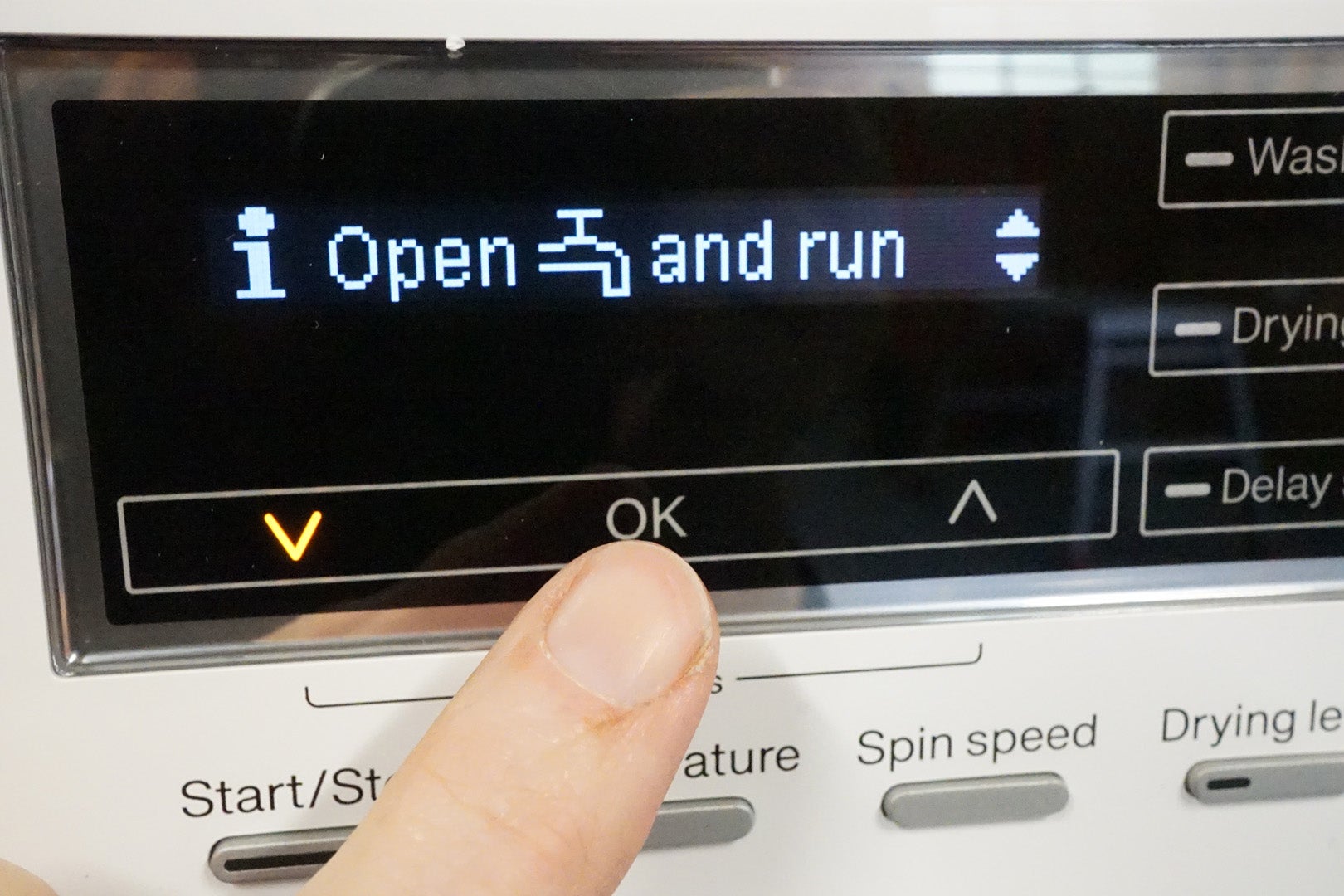
Miele WTH120 – How noisy is it?
Miele’s laundry appliances are always very quiet. No surprise then that the flagship WT1 is no exception, with wash noise, spin noise and drying noise all coming in well below what’s stated on the energy label.
Bubbling along at an average of just 43dB, the wash is stupendously quiet. That’s some 5dB less than stated on the energy label and not much noisier than a modern fridge-freezer. The large double-glazed door and sheer mass of the appliance ensure that both motor noise and sloshing noises are well suppressed.
As the machine builds up to its 1600 maximum spin speed, the levels of sound damping are no less impressive. In the first three spins it ramps up to around 58dB, with the final 1600 spin topping our sound pressure level meter at just 62dB. That’s ridiculously quiet for any machine, let alone one that reaches the heady heights of 1600rpm.
Our measured results were more than 10dB down on a what’s stated on the energy label. This Miele is way quieter than any other washer-dryer we’ve tested, in fact.
On the drying cycle the WTH120 hums into life. There’s very little water pump noise where the condensed water is being ejected to the waste and the motor noise is almost negligible. We measured around 55dB throughout the drying cycle, and even this figure is some 5dB quieter than stated.
Miele WTH120 is one of the quietest washer dryers on the market. Truly impressive.
Related: Best cordless vacuum cleaners
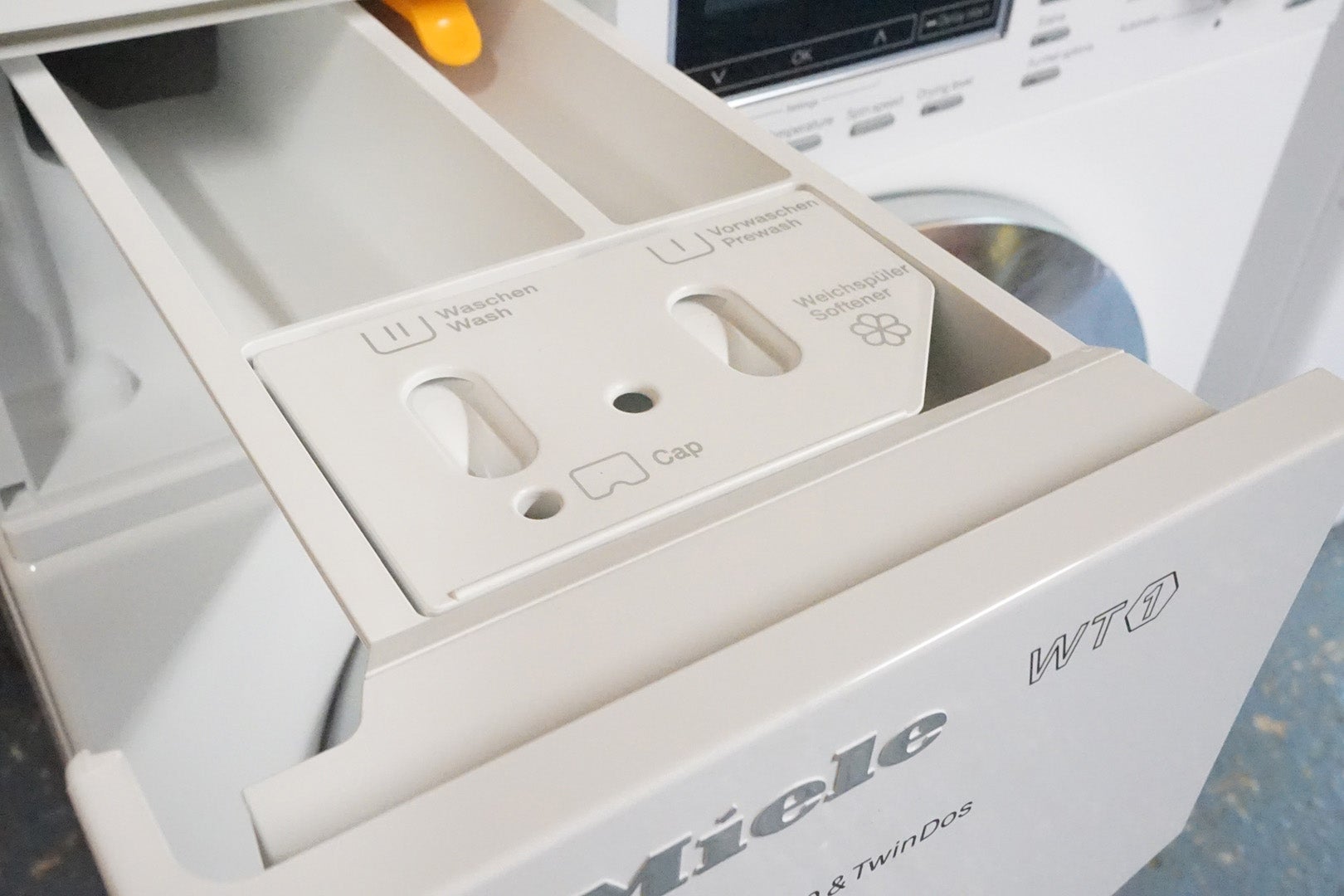
Miele WTH120 – What programmes does it have?
With 17 headline washing programmes, 16 main drying programmes and a host of combined wash-and-dry cycles, the WTH120 is nothing if not comprehensive. The size of the options list is right up there with German cars – and at least they come as standard on the WTH120, rather than having to pay for them all.
The wash programmes list covers a fully Automatic program, QuickPower wash, Cottons, Minimum Ironing, Delicates, Shirts and Dark Garments. Pausing only to catch a breath, it adds an Express wash, Denim cycle, Outerwear programme, re-proofing programme, a programme dedicated to Trainers and another for Down jackets and quilts.
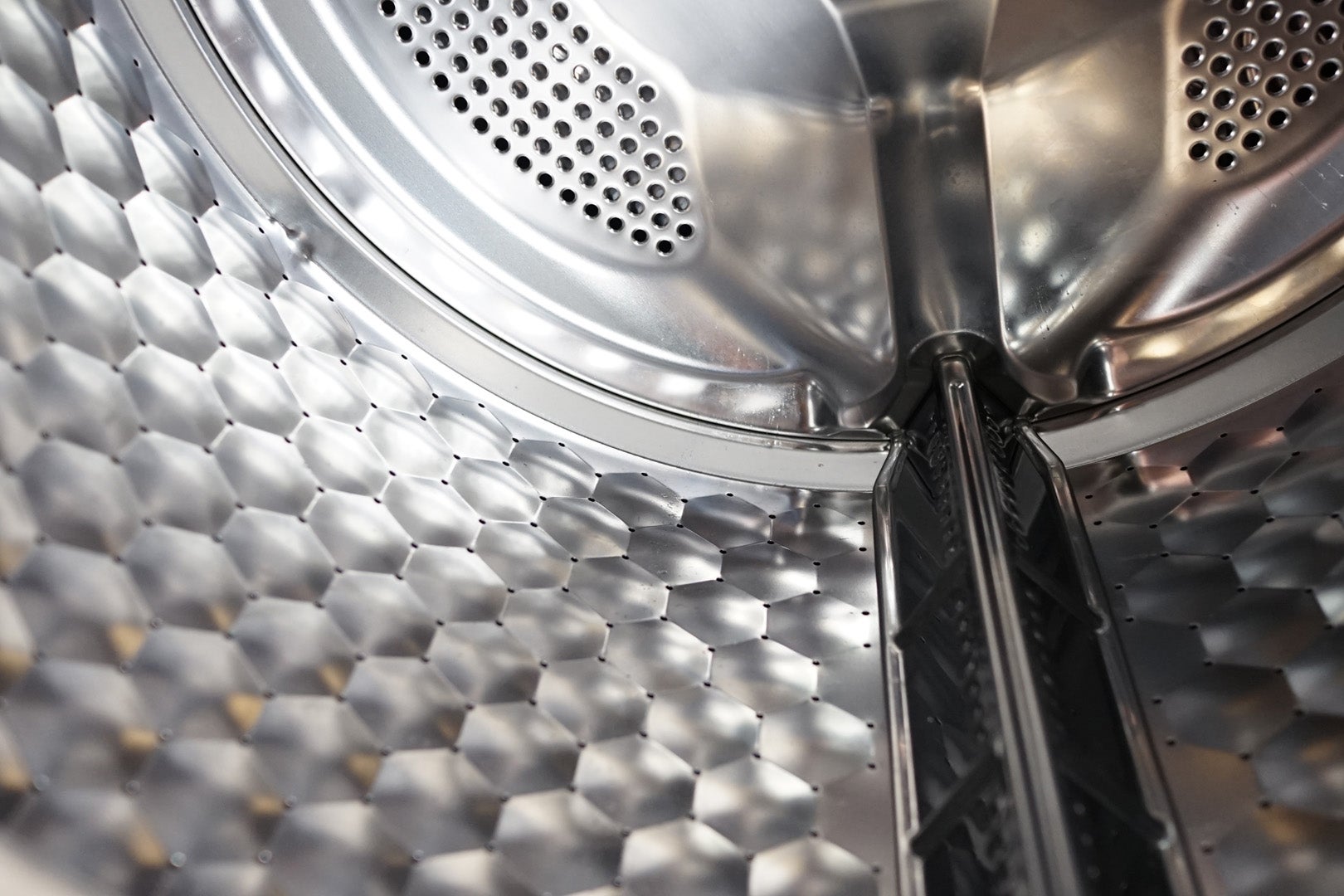
There’s even a programme for curtains as well as a super-hygiene wash for cottons. There’s a Steam Care program that adds a steam cycle to reduce ironing requirements and, finally, a machine-cleaning program that keeps your Miele all buffed and sparkling on the inside.
The drying cycles almost replicate the wash cycles covering fully Automatic, QuickPower, Cottons, Minimum Iron, Delicates, Shirts, Silk, Woollens, Outerwear, Proofing, Sportswear, Trainers and Cotton Hygiene programmes. On top of that lot you get a cool air or warm air timed dry and a freshen up tumble for clean clothes.
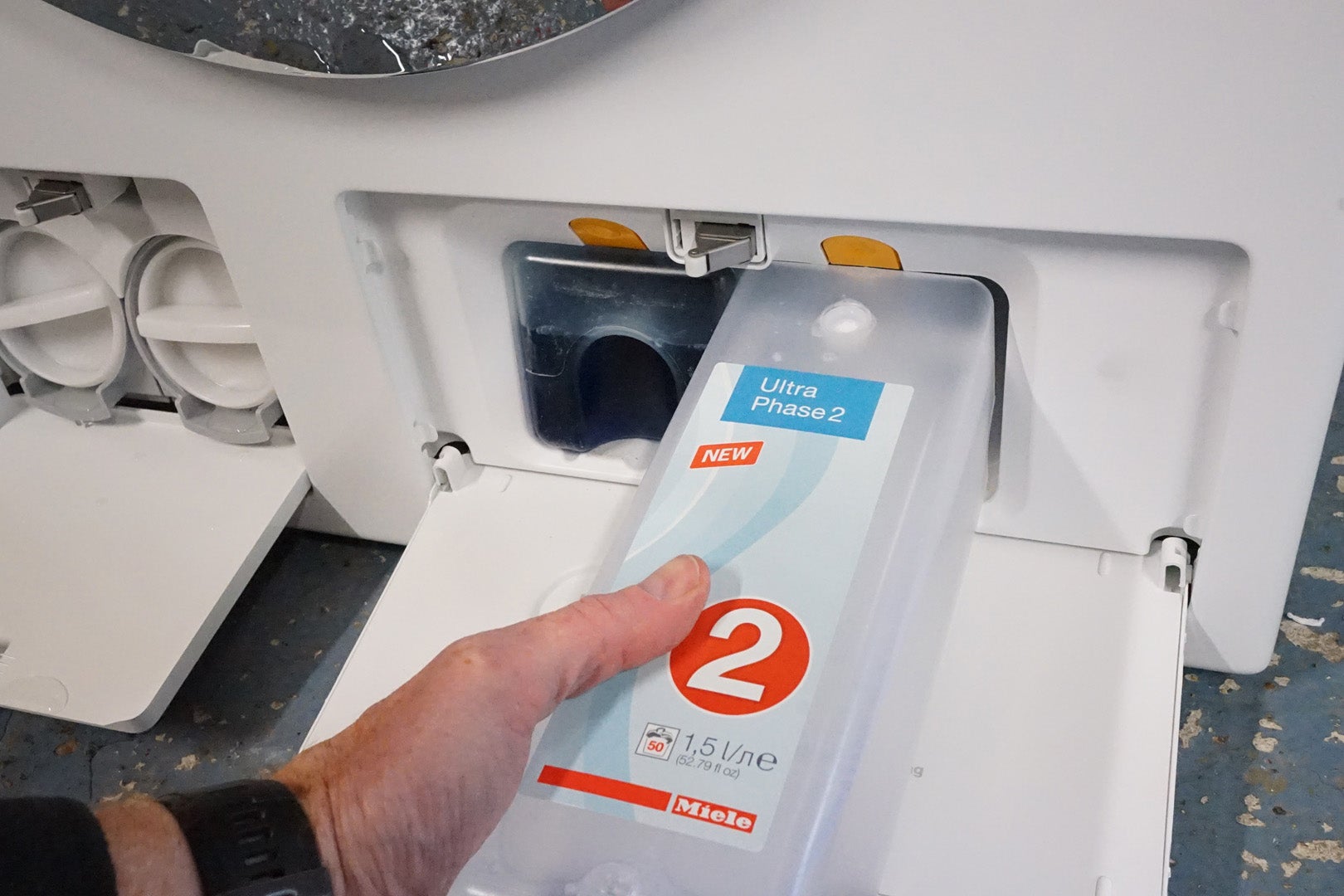
You can combine cycles in both camps for seamless wash and dry, and add a number of wash options to either the wash and wash-and-dry cycles. These include a Soak, Pre-Wash, Additional Rinse and an option to reduce the total cycle time. There’s the option for TwinDos, CapDosing or standard detergent/conditioner in the pull-out soap drawer, a child lock and switchable audible indicators. Phew.
For drying you get three levels of dryness to choose from, let’s call them Iron Dry, Cupboard Dry and Extra Dry – even if Miele doesn’t refer to them as such – and an anti-crease option.
But hold on. This machine is part of Miele’s smart appliance range so can be connected to your home Wi-Fi network and the Miele@Home/Miele@Mobile service. This offers a host of remote control and notification options, as well as the ability to download new custom programmes from Miele as they become available.
You can now see why that instruction manual is 120 pages long.
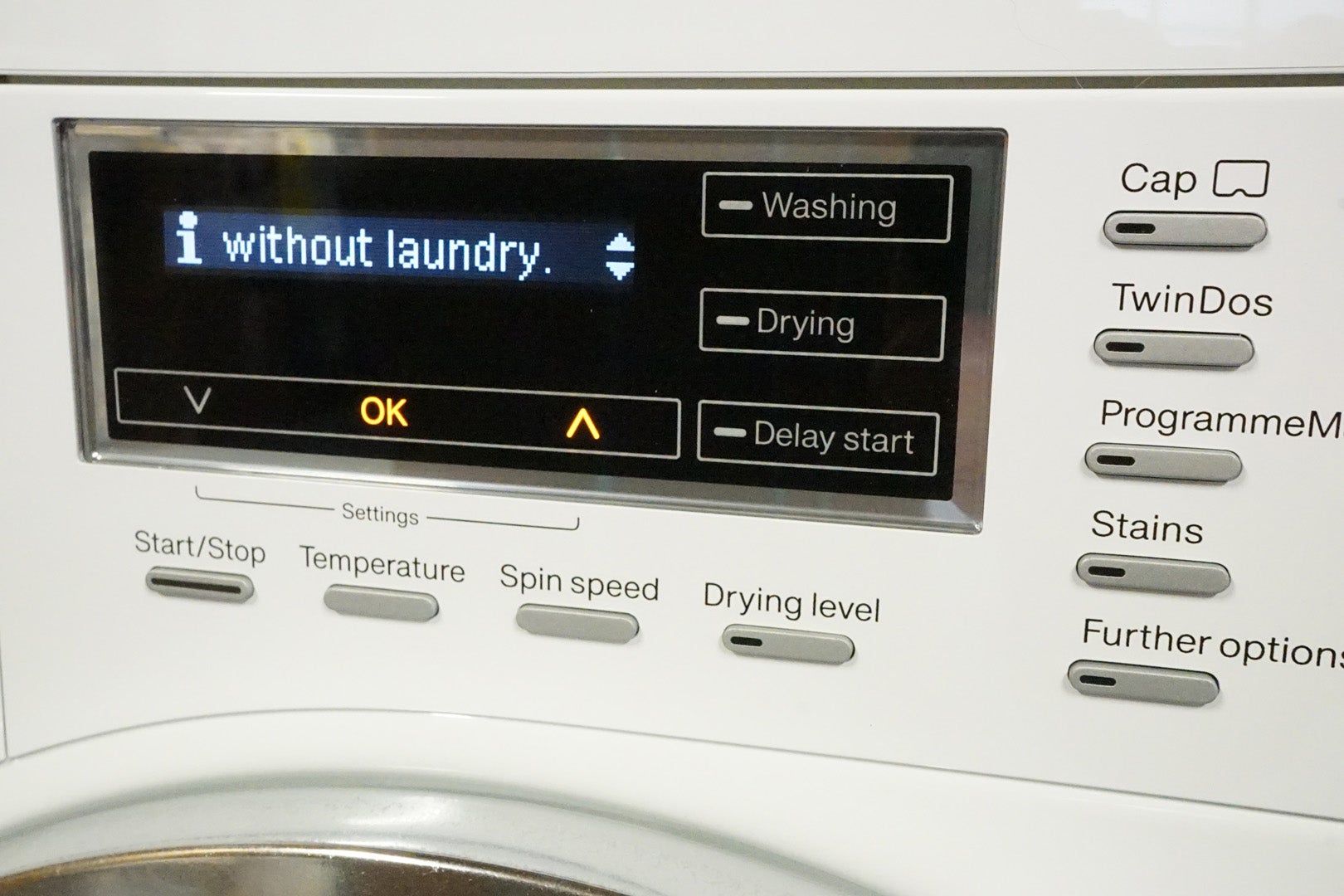
Miele WTH120 – How well does it wash and dry?
Okay, as mentioned, this machine has a ludicrously small drum by modern standards. It’s noticeable, too. The opening and the drum look small and our standard 80% max wash load (5.6kg) of typical screwed up cotton clothes just wasn’t going to fit. We took a few items out for just under 5kg of dry clothes for the main ‘full’ wash.
In went our test stain strip with dried-on blood, coffee, turmeric, ketchup, cranberry and engine oil, and we used Miele’s supplied UltraPhase detergents through the automatic TwinDos system. Or, at least we did on the third attempt. At that point, we realised the machine didn’t default to TwinDos, even if the TwinDos containers were installed. You have to manually select the feature every time. We had managed two complete washes with no detergent at all. Do’h!
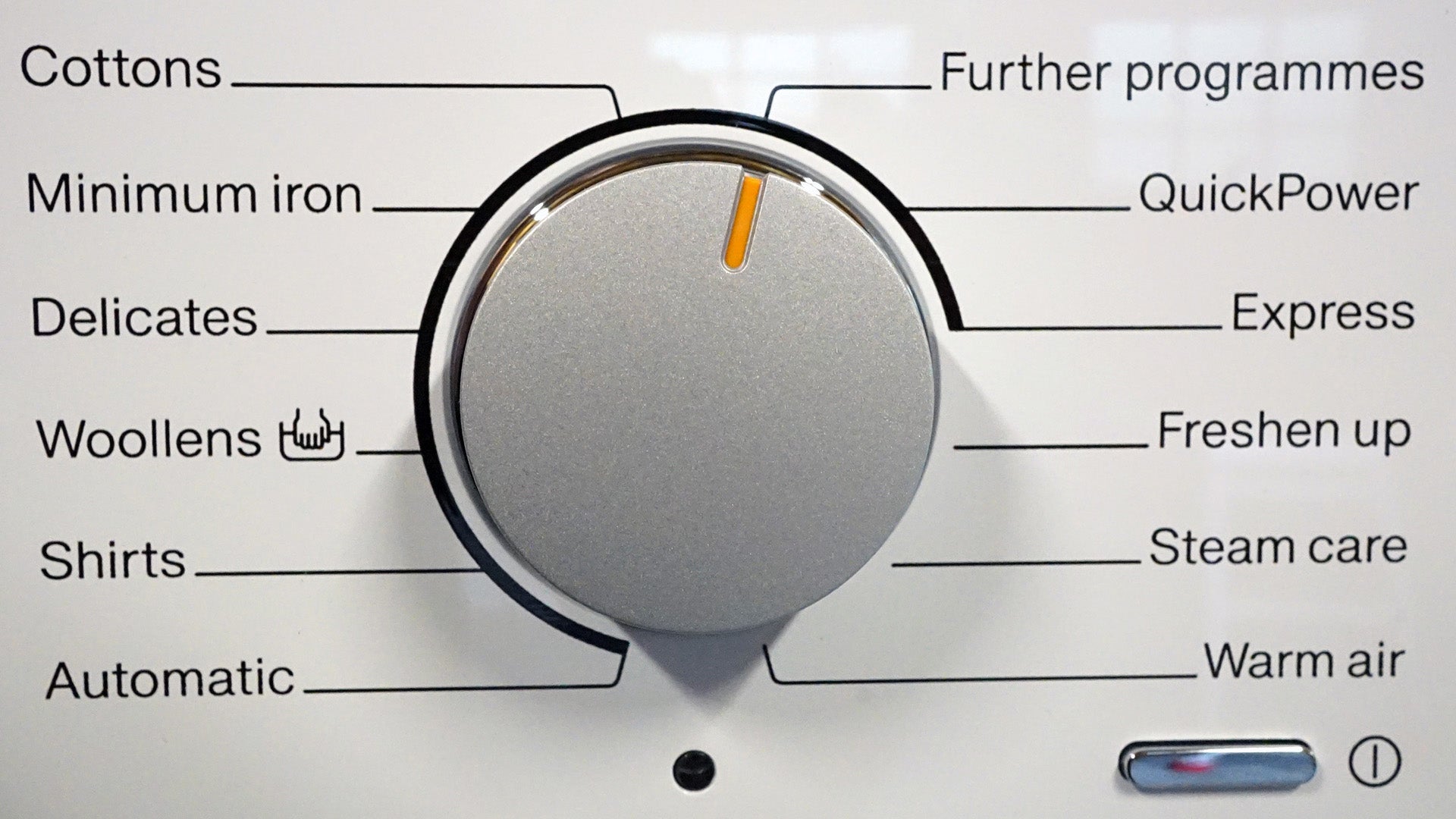
Third time lucky, and despite the seriously cramped drum with over 5kg of washing, the test strip came out looking very good. The blood, ketchup and cranberry were gone completely, with the coffee and turmeric showing faint shadows. Even the engine oil had been significantly diminished. If you used full biological detergent in the soap drawer, the results would be stellar. That’s very good indeed for a washer-dryer, which tend to suffer reduced washing and drying performance over their dedicated counterparts.
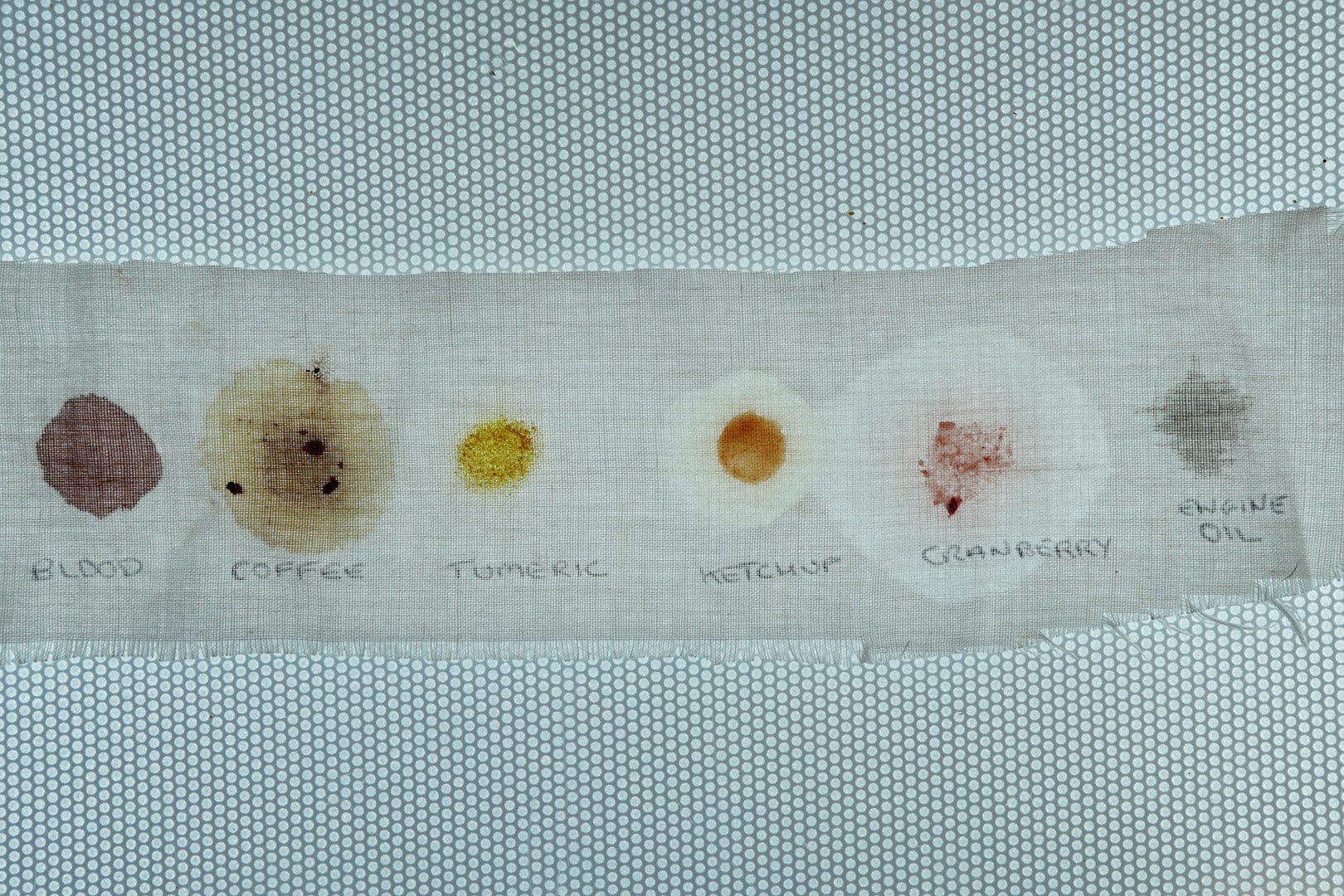
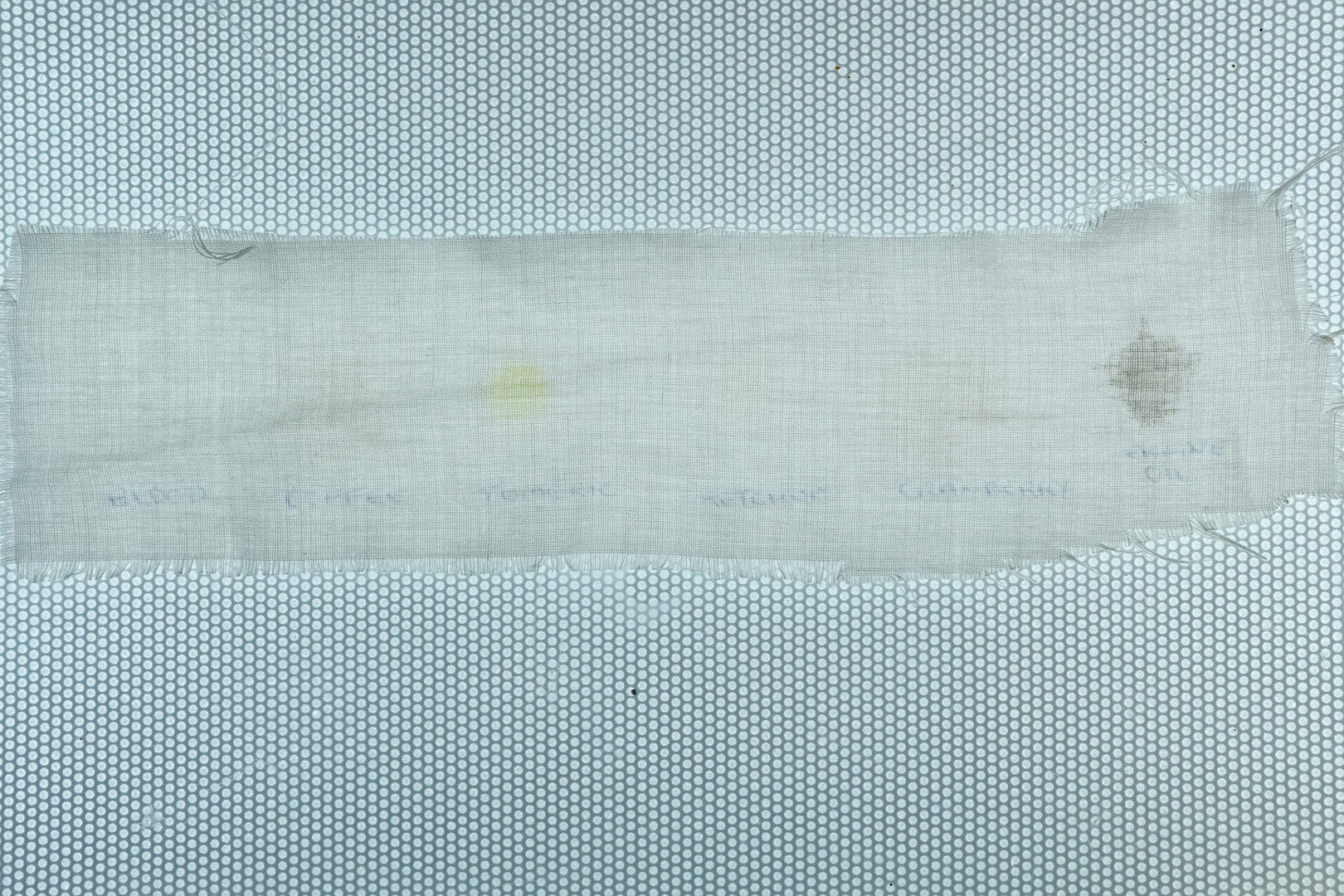
Energy use and water looked very low on first examination, but that has to be tempered with what’s a relatively small load. While 0.6kWh and just 30 litres of water for a full wash load is impressive, against less than 5kg of clothing the resource cost per kilo is rather less impressive.
This explains why this machine achieves only an A rating for energy efficiency, rather than adding any pluses to that score. Wash times were also reasonable for an eco appliance – just 2hrs 40mins for our full load cotton cycle at 40 degrees.
The super-fast 1600 spin and Miele’s honeycomb drum turned in excellent spin results. It left around 30% or less of additional moisture in the load, even with the drum packed to bursting with 5kg of washing. Half loads produced an almost identical 30% result. That would be impressive for a dedicated washing machine; it’s exceptional for a washer-dryer.

Using sophisticated moisture-sensing technology, the WTH120 produced some equally exceptional drying results too. Even with our full load, dryness levels on all three setting were precise and what we’d require. They ranged from still moist on the damper setting and ideal for ironing, to a perfect zero per cent water retention for the extra dry setting.
Clearly Miele’s technology has overcome the difficulties of drying in a smaller drum (much smaller than a dedicated dryer), but not without throwing a fair bit of energy at the problem. The mid-dry setting used around 1.7kWh of energy for a full load, which is certainly a bit higher than a dedicated standard tumble dryer and over double that of a modern heat-pump dryer for the same load.
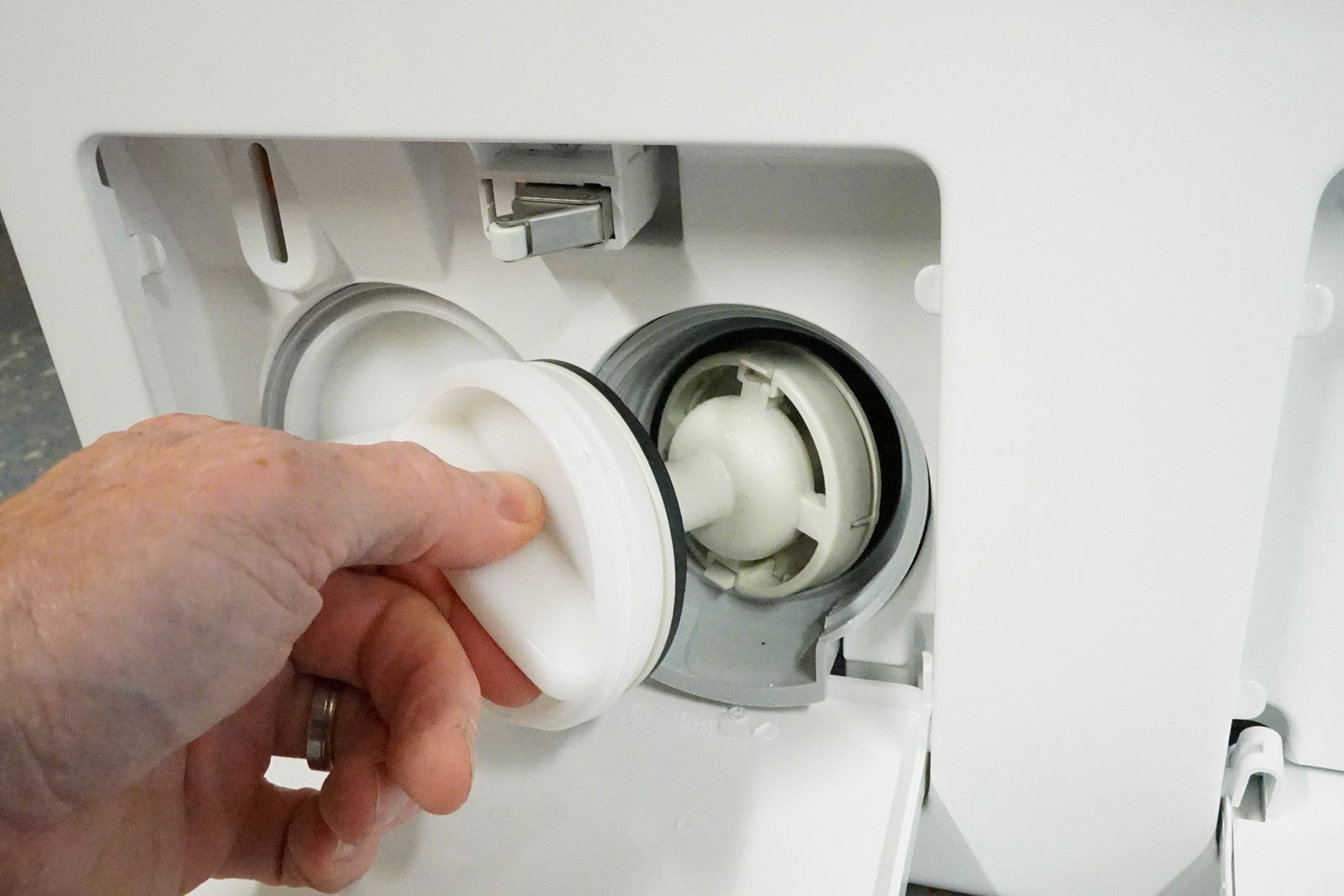
Miele WTH120 – How much will it cost to run?
With so many programmes, options, variables and sensor-based energy use depending on soiling level, the running costs for the Miele WTH120 are a variable feast. However, due to the limitations of squeezing a lot of washing and drying technology into the same space, it will certainly cost you a fair bit more to run than separate top-spec washing and drying appliances.
Another slight anomaly was that our half-load washes used only about 15% less electricity and almost the same water as full-load washes. Similarly, our full-load drying tests took around 1.7kWh of mains power while a half-load used 1.4kWh. It’s worth noting then that this Miele is at its economical best washing and drying a packed drum load of washing.
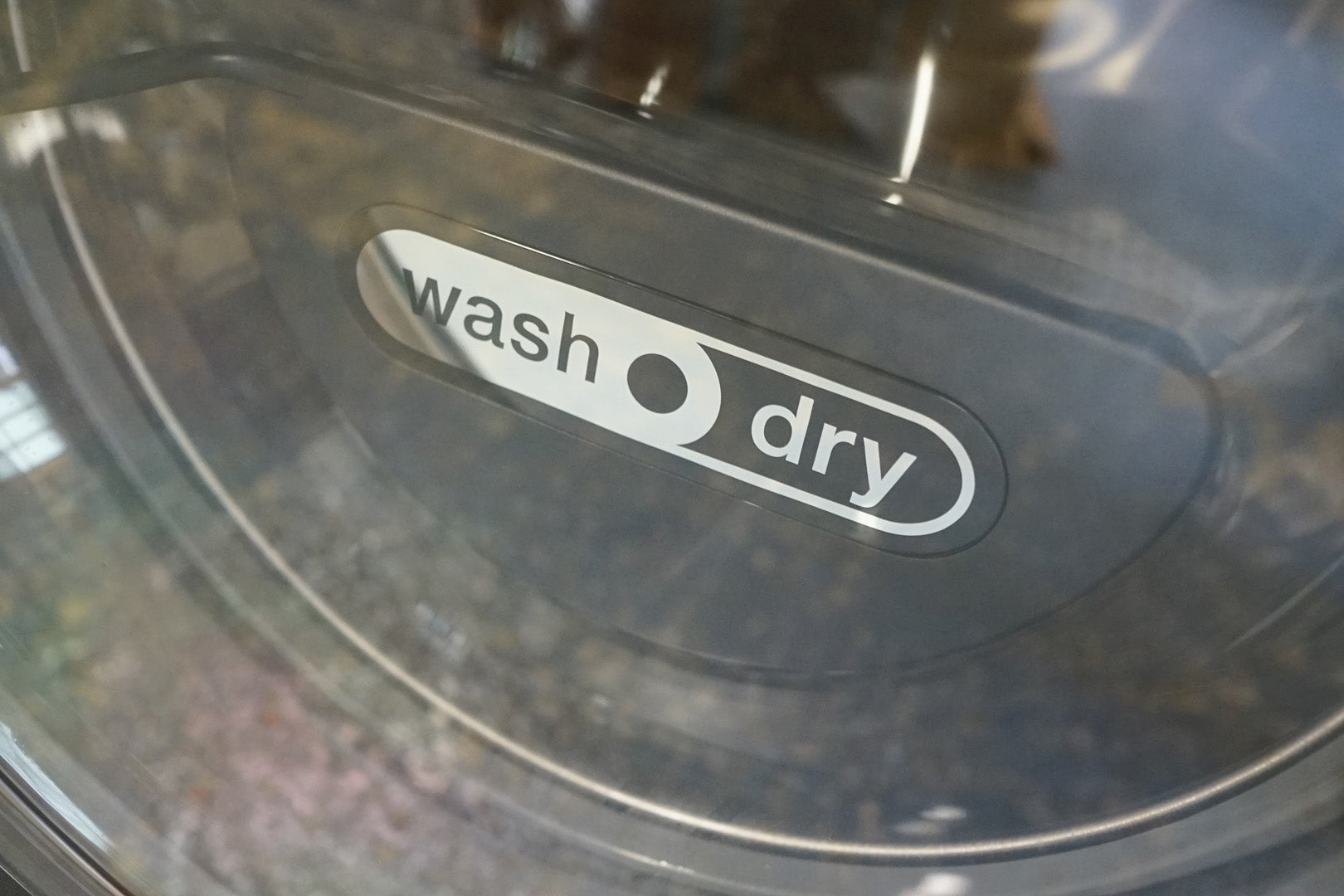
Working on a UK household annually doing 200 x 40°C 80% max load washes (200 x 0.65kWh) and 40 x 40°C 40% half load washes with the latter split 50/50 on normal wash and wash & dry programmes (20 x 0.55kWh + 20 x (0.55kWh+1.40kWH)), annual consumption would be about 190kWh. For the same regime, metered water use would be around 7200 litres.
At an average 15p/kWh and £3.50 per cubic meter of water and waste charges, that’s a total running cost of a fairly frugal £55 per year.
Not bad at all, but chances are you’ll use the dryer a lot more than that and that figure would only cater for a grand total of 1100kg of washing – which isn’t a lot if there are more than one or two of you in the household.
Related: Best dish washers
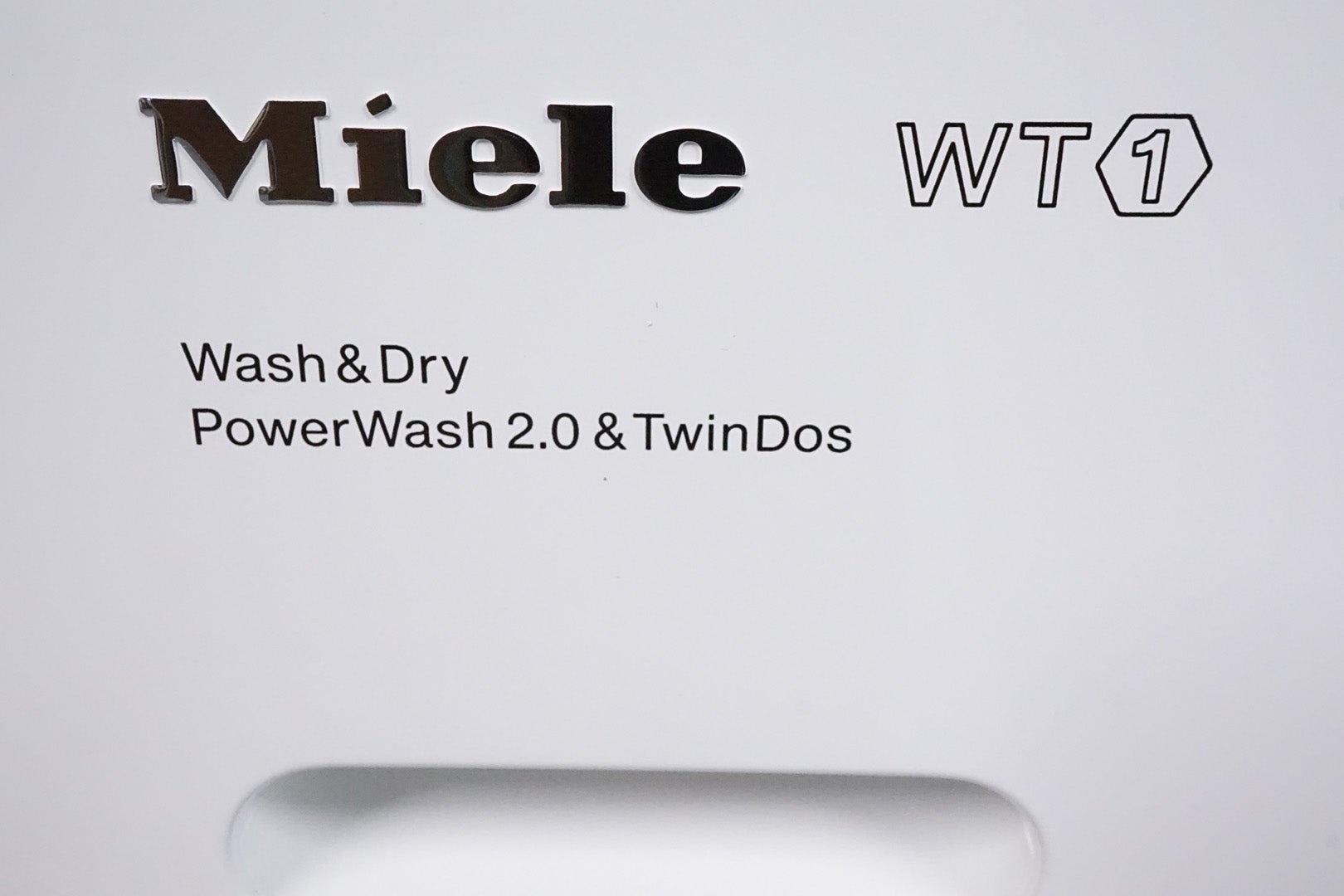
Should I buy the Miele WTH120?
Washer-dryers are always going to be a compromise, but Miele’s WTH120 is a whole lot less compromised than most. While only suitable for smaller families with its limited drum capacity, this machine offers exceptional cleaning and drying performance and reasonably low running costs. It’s a supremely well featured, ridiculously quiet and robustly built package too.
Larger families will want to look for a model with a bigger capacity (such as Miele’s own WTZH130, for example), but for a trendy bachelor pad requiring a super-high-performance appliance in limited space, the WTH120 is pretty much unbeatable.
Verdict
A super-quiet and extremely high-performance washer dryer with compact capacity suited to smaller homes.


